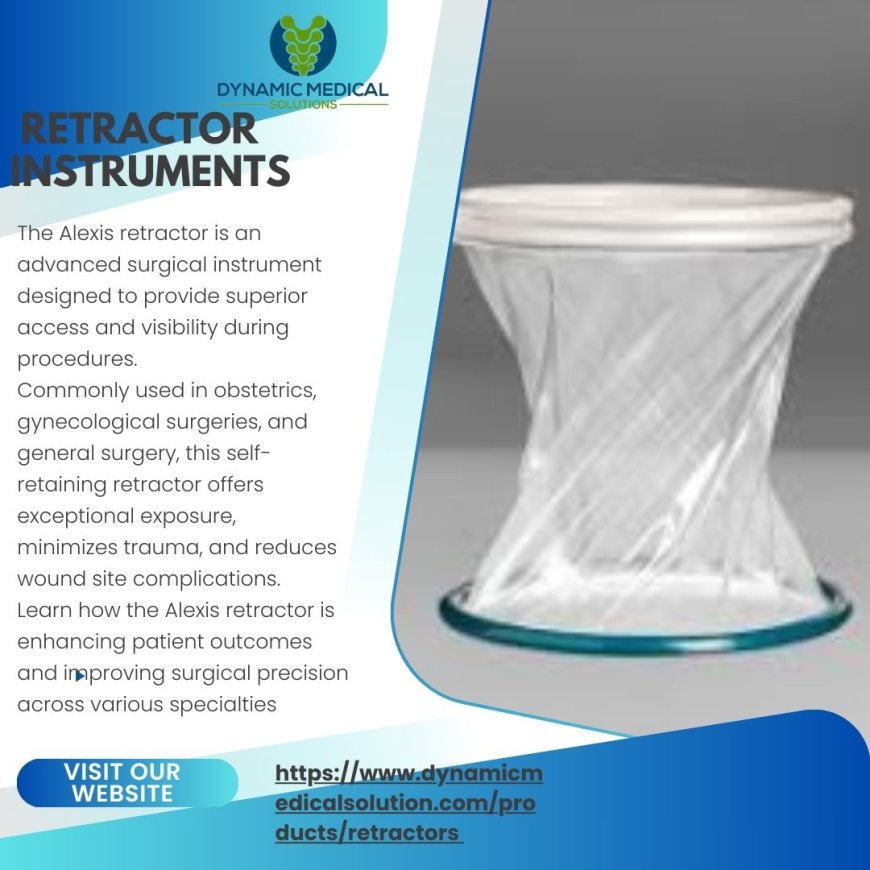The Importance of Retractor Instruments in Otology
In the field of otology, where precision and delicate handling of tissues are essential, otology instruments play a crucial role. Among these, Retractors instruments stand out as indispensable tools,
In the field of otology, where precision and delicate handling of tissues are essential, otology instruments play a crucial role. Among these, retractors instruments stand out as indispensable tools, designed to assist surgeons in accessing and visualizing the operative site with minimal interference. Retractors enhance the success of surgeries by improving visibility, allowing for greater precision and reducing complications.
What are Retractors?
Retractors are surgical instruments that hold tissues apart, providing surgeons with a clear, unobstructed view of the surgical field. These tools are essential in a variety of surgical procedures, particularly in otology, where structures like the ear drum, ossicles, and inner ear need to be accessed with extreme care.
In otology, retractors come in various sizes and designs to cater to the specific needs of ear surgeries. By carefully holding tissues and structures in place, they allow surgeons to focus on the target area without unnecessary strain, improving both the speed and accuracy of the procedure.
Enhancing Surgical Precision with Retractors
In otologic surgeries, precision is key. A small mistake can lead to complications that affect a patient's hearing or balance. Retractors play a vital role in ensuring that these procedures are performed accurately. By retracting tissues and stabilizing the surgical area, they provide the surgeon with a steady, unblocked view of the operation site. This is particularly important during procedures such as stapedectomy or tympanoplasty, where millimeters matter.
Moreover, the improved visibility reduces the need for repetitive movements or repositioning, allowing the surgery to be completed more efficiently. With a retractor in place, surgeons can perform detailed and complex tasks with greater confidence.
Types of Retractors in Otology
Different surgeries require different types of retractors, each designed for specific purposes:
-
Self-Retaining Retractors: These retractors hold themselves in place, allowing surgeons to work hands-free, which is especially useful in microscopic ear surgeries.
-
Manual Retractors: These retractors are held by an assistant, giving more flexibility in repositioning during the procedure.
-
Micro-Retractors: Designed for detailed and microscopic work, these are smaller versions that allow for precise movements in delicate areas.
The Role of Retractors in Minimizing Surgical Risks
Aside from improving visibility, retractors are also critical in minimizing the risk of damage to surrounding tissues. In otology, where structures are small and fragile, protecting non-targeted areas is essential. By gently holding tissues away from the surgical field, retractors reduce the risk of accidental injury to nearby nerves, blood vessels, or other delicate structures.
In many otology procedures, retractors are used to maintain the integrity of the skin, cartilage, or bone, preventing unnecessary trauma and speeding up recovery times. This makes them an essential tool in surgeries like cochlear implants or mastoidectomy.
Post-Surgical Benefits of Using Retractors
The careful use of retractors during surgery not only aids the surgeon but also benefits the patient post-surgery. With proper tissue handling and retraction, the likelihood of inflammation, scarring, or infection is reduced. This can lead to shorter recovery periods and better overall outcomes for the patient.
For otology surgeries, where the risk of hearing loss or balance issues can be high, using the right retractor ensures that the surgical site is treated with care. Patients who undergo surgeries where retractors are effectively used often experience fewer complications and a smoother recovery process.
Conclusion
The importance of retractors in otology cannot be overstated. These essential otology instruments provide surgeons with the visibility, precision, and control necessary to perform complex ear surgeries. By minimizing risks, improving accuracy, and enhancing post-surgical outcomes, retractors play a vital role in the success of otologic procedures. Whether it's self-retaining or manual, the right retractor can make all the difference in ensuring a smooth, successful surgery.
More info: Dynamic Medical
What's Your Reaction?














![Noots Focus Reviews [Truth Exposed 2025]!](https://news.bangboxonline.com/uploads/images/202501/image_430x256_678e3b94881a1.jpg)
![Vivalis Male Enhancement: The Must-Know Ingredients [2025 Update]](https://news.bangboxonline.com/uploads/images/202501/image_430x256_678e3b54e396c.jpg)










